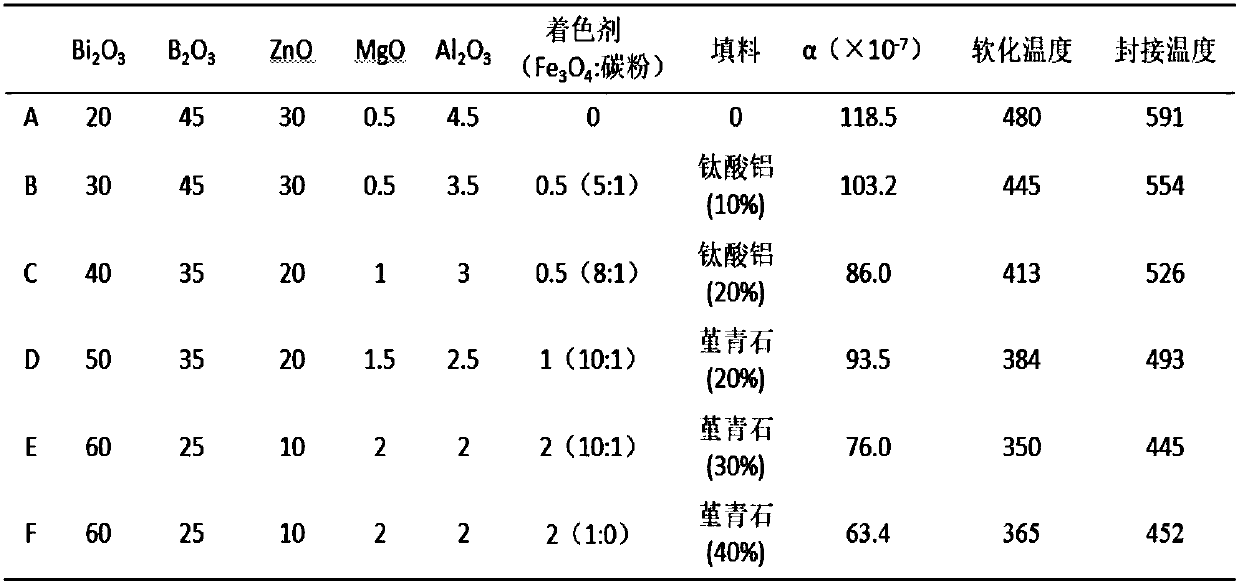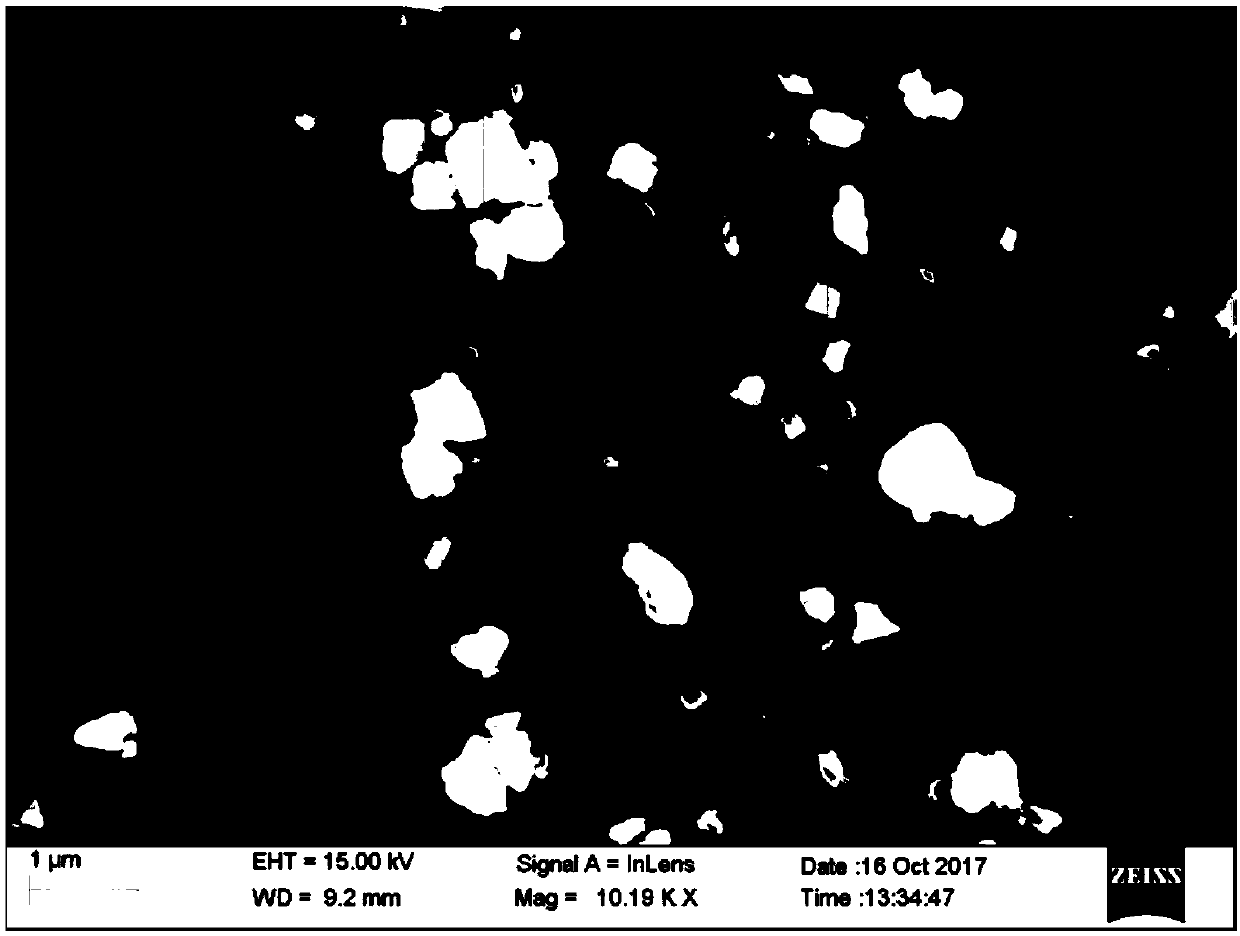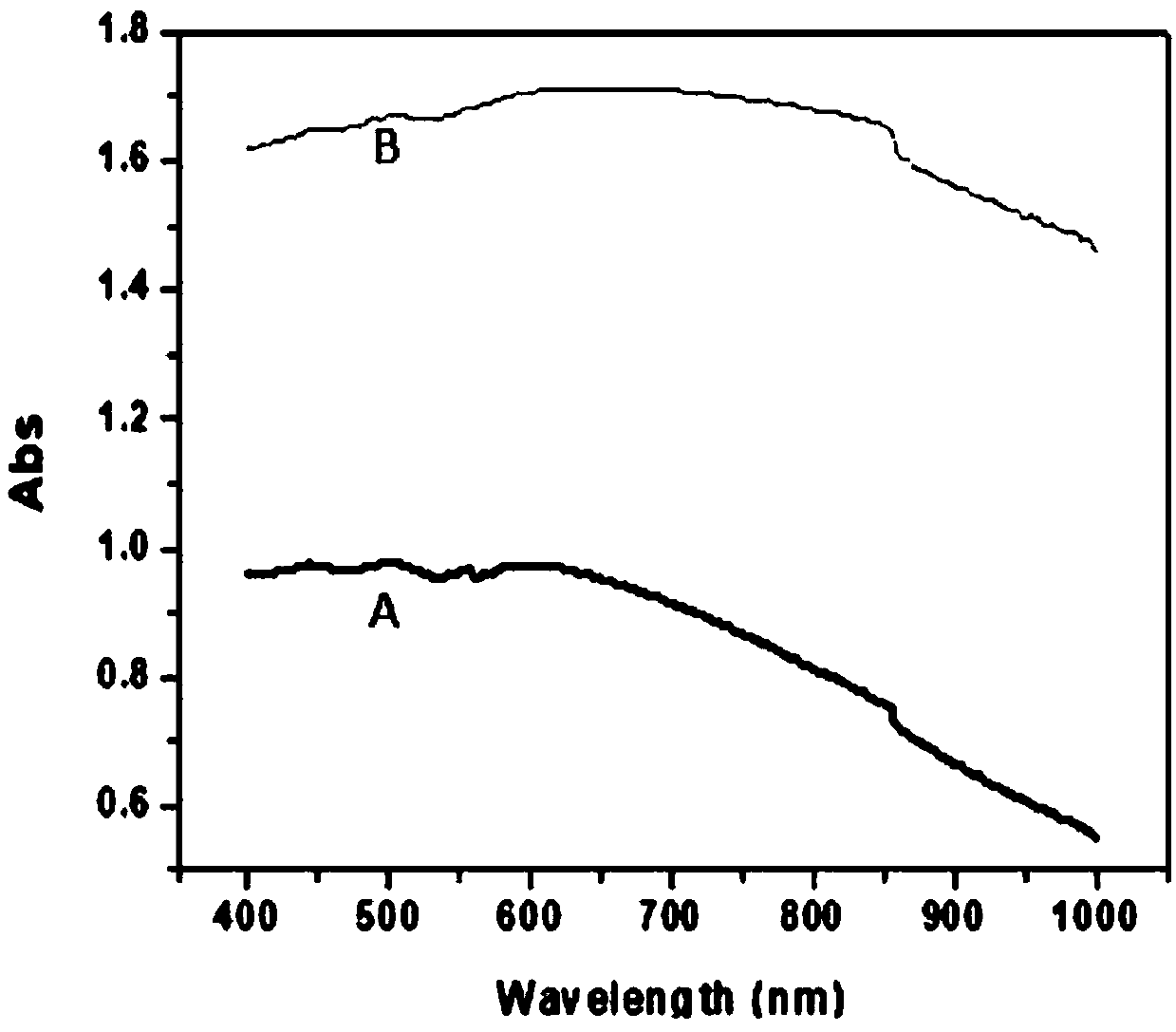Low-melting-point glass powder and preparation method thereof
A low-melting point glass and glass powder technology, which is applied in the preparation of the low-melting point glass powder, in the field of low-melting point glass powder, can solve the problem of narrow application range of lead-free bismuth salt glass powder
- Summary
- Abstract
- Description
- Claims
- Application Information
AI Technical Summary
Problems solved by technology
Method used
Image
Examples
Embodiment 1
[0028] Weigh 20 parts of Bi according to the unit mass 2 o 3 , 30 parts of ZnO, 45 parts of B 2 o 3 , 0.5 parts of MgO, 4.5 parts of Al 2 o 3 , They were melted in a lifting furnace at 1100°C, cooled and ball-milled into primary glass powder, and then prepared into nano-glass powder by freezing and grinding. The particle size of the glass powder is 150nm to 450nm.
Embodiment 2
[0030] Weigh 30 parts of Bi according to the unit mass 2 o 3 , 30 parts of ZnO, 45 parts of B 2 o 3 , 0.5 parts of MgO, 3.5 parts of Al 2 o 3 , they were smelted in a lifting furnace at 1100°C, cooled and ball-milled into primary glass powder, and then 0.5 parts of colorant and aluminum titanate accounting for 10% of the total mass percentage of glass powder were added, wherein the colorant was Fe with a mass ratio of 5:1 3 o 4 / carbon powder mixture, and finally prepare nano glass powder by freezing and grinding, and the particle size of the glass powder is 150nm-450nm. figure 2 It is the particle size chart of the glass powder after freezing and grinding. image 3 It is a comparison chart of light absorption intensity between Example 1 and Example 2. Curve A corresponds to Example 1, and Curve B corresponds to Example 2. After adding a colorant, the light absorption ability is greatly improved.
Embodiment 3
[0032] Weigh 40 parts of Bi according to the unit mass 2 o 3 , 20 parts of ZnO, 35 parts of B 2 o 3 , 1 part of MgO, 3 parts of Al 2 o 3 , they were smelted in a lifting furnace at 1100°C, cooled and ball-milled into primary glass powder, and then 0.5 parts of colorant and aluminum titanate accounting for 20% of the total mass percentage of glass powder were added, wherein the colorant was Fe with a mass ratio of 8:1 3 o 4 / carbon powder mixture, and finally prepare nano glass powder by freezing and grinding, and the particle size of the glass powder is 50nm-150nm.
PUM
| Property | Measurement | Unit |
|---|---|---|
| Particle size | aaaaa | aaaaa |
| Particle size | aaaaa | aaaaa |
| Particle size | aaaaa | aaaaa |
Abstract
Description
Claims
Application Information
 Login to View More
Login to View More - R&D
- Intellectual Property
- Life Sciences
- Materials
- Tech Scout
- Unparalleled Data Quality
- Higher Quality Content
- 60% Fewer Hallucinations
Browse by: Latest US Patents, China's latest patents, Technical Efficacy Thesaurus, Application Domain, Technology Topic, Popular Technical Reports.
© 2025 PatSnap. All rights reserved.Legal|Privacy policy|Modern Slavery Act Transparency Statement|Sitemap|About US| Contact US: help@patsnap.com



